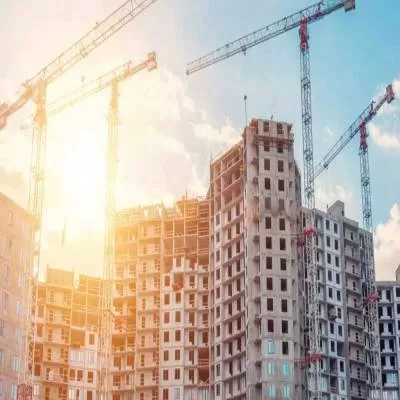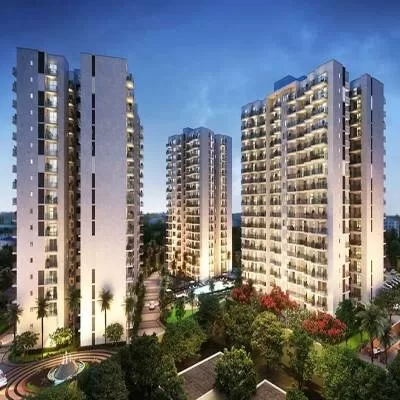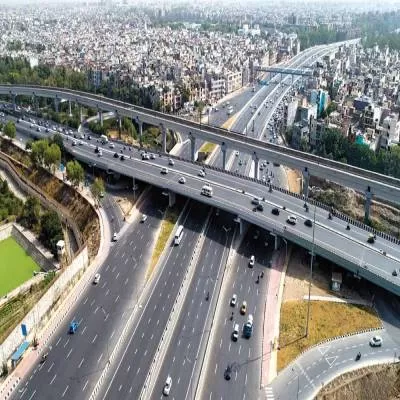- Home
- Real Estate
- Outlook 2016

Outlook 2016
The construction sector is the second largest employer and contributor to economic activity, accounts for the second highest inflow of FDI and employs over 35 million people. Ten per cent of India´s GDP is based on construction activity, with the current growth rate for GDP in construction being 8.1 per cent.
In fact, 50 per cent of the demand for construction activity in India comes from the infrastructure sector. Cities contribute significantly to India´s GDP. The urban share of the GDP is projected to increase from 62-63 per cent in 2009-10 to 70-75 per cent in 2030. This can be achieved only by growing the road, railways, metro, power, water, airport, port and real estate sectors.
The government has a $3.8-billion outlay planned for highways with infrastructure development worth $19 billion between 2012 and 2017. With 112 completed PPP projects and 149 still under progress, the sector has been doing exceptionally well with great prospects in the year to come.
In addition, several cities across the country have launched heavy rail-based mass rapid transit system (MRTS) projects. Rapid urbanisation is expected to create another 15 metropolitan cities over the next decade. And, when it comes to ´Make in India´, the Delhi Metro is already walking the talk.
When we talk about railways, India is the fourth largest rail freight carrier in the world, with a 1.3 million strong workforce, and the world´s largest passenger carrier. Indian Railways envisages an investment of Rs 8.5 lakh crore in the next five years.
What´s more, the country has the fifth largest power generation portfolio and is the fifth largest wind energy producer. As on March 31, 2015, it has an installed capacity of 271.722 GW, and is targeting 100,000 MW of solar power by 2022.
Besides, the country´s aviation industry is the ninth largest civil aviation market. The industry is expected to grow to be the third largest aviation market with 800 aircraft by 2020, and attract 60 million international passengers by 2017.
To add to this, the Indian real estate market, estimated at about $78.5 billion in 2013, is expected to grow to about $140 billion by 2017, as per industry estimates. Also, the implementation of the Real Estate Investment Trust (REIT) is expected to have a huge impact.
The Union Government has also been driving a few major initiatives creating opportunities in the water sector. The Central Ground Water Authority (CGWA) has revised its 2012 guidelines on evaluation of proposals for groundwater extraction and the smart cities initiative will provide greater opportunity to the sector.
Further, with 100 smart cities lined up for construction, India is lining-up a blueprint for future urban development. Also, with the easing of investment caps and controls, India´s high-value industrial sectors - defence, construction and railways - are now open to global participation.
The country has already marked its presence as one of the fastest growing economies of the world and has been ranked among the top three attractive destinations for inbound investments. Indeed, India´s infrastructure is poised for phenomenal growth. However, this is possible only with a concerted and committed effort to regenerate the roads, railways, metro, power, water, airports, ports and real estate sectors and boost the country´s economy.
CW brings expert perspectives to chart the growth potential for each of these sectors in 2016.
Roads - Highway to Growth
Real Estate - A Streak of Hope
Ports - Coast Clear for Growth?
Railways - On the Magnifying Track
Metro - The Future of Urban Transport
Metro - Mobilising transportation to a new level
Power - Making Discoms Viable
Water - Going with the Flow
Airports- A Realm of Opportunity
Where are the roads, railways, metro, power, water, airports, ports and real estate sectors headed in 2016? CW showcases expert opinions from each sector to learn what´s in store in the year to come. The construction sector is the second largest employer and contributor to economic activity, accounts for the second highest inflow of FDI and employs over 35 million people. Ten per cent of India´s GDP is based on construction activity, with the current growth rate for GDP in construction being 8.1 per cent. In fact, 50 per cent of the demand for construction activity in India comes from the infrastructure sector. Cities contribute significantly to India´s GDP. The urban share of the GDP is projected to increase from 62-63 per cent in 2009-10 to 70-75 per cent in 2030. This can be achieved only by growing the road, railways, metro, power, water, airport, port and real estate sectors. The government has a $3.8-billion outlay planned for highways with infrastructure development worth $19 billion between 2012 and 2017. With 112 completed PPP projects and 149 still under progress, the sector has been doing exceptionally well with great prospects in the year to come. In addition, several cities across the country have launched heavy rail-based mass rapid transit system (MRTS) projects. Rapid urbanisation is expected to create another 15 metropolitan cities over the next decade. And, when it comes to ´Make in India´, the Delhi Metro is already walking the talk. When we talk about railways, India is the fourth largest rail freight carrier in the world, with a 1.3 million strong workforce, and the world´s largest passenger carrier. Indian Railways envisages an investment of Rs 8.5 lakh crore in the next five years. What´s more, the country has the fifth largest power generation portfolio and is the fifth largest wind energy producer. As on March 31, 2015, it has an installed capacity of 271.722 GW, and is targeting 100,000 MW of solar power by 2022. Besides, the country´s aviation industry is the ninth largest civil aviation market. The industry is expected to grow to be the third largest aviation market with 800 aircraft by 2020, and attract 60 million international passengers by 2017. To add to this, the Indian real estate market, estimated at about $78.5 billion in 2013, is expected to grow to about $140 billion by 2017, as per industry estimates. Also, the implementation of the Real Estate Investment Trust (REIT) is expected to have a huge impact. The Union Government has also been driving a few major initiatives creating opportunities in the water sector. The Central Ground Water Authority (CGWA) has revised its 2012 guidelines on evaluation of proposals for groundwater extraction and the smart cities initiative will provide greater opportunity to the sector. Further, with 100 smart cities lined up for construction, India is lining-up a blueprint for future urban development. Also, with the easing of investment caps and controls, India´s high-value industrial sectors - defence, construction and railways - are now open to global participation. The country has already marked its presence as one of the fastest growing economies of the world and has been ranked among the top three attractive destinations for inbound investments. Indeed, India´s infrastructure is poised for phenomenal growth. However, this is possible only with a concerted and committed effort to regenerate the roads, railways, metro, power, water, airports, ports and real estate sectors and boost the country´s economy. CW brings expert perspectives to chart the growth potential for each of these sectors in 2016. Roads - Highway to Growth Real Estate - A Streak of Hope Ports - Coast Clear for Growth? Railways - On the Magnifying Track Metro - The Future of Urban Transport Metro - Mobilising transportation to a new level Power - Making Discoms Viable Water - Going with the Flow Airports- A Realm of Opportunity
























